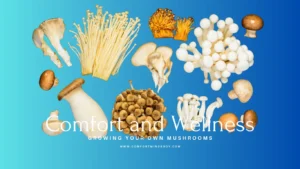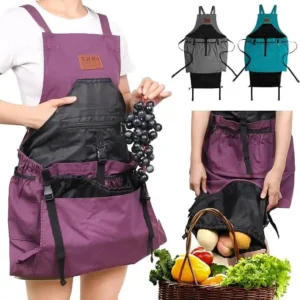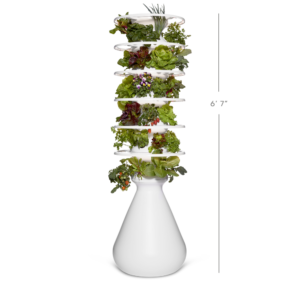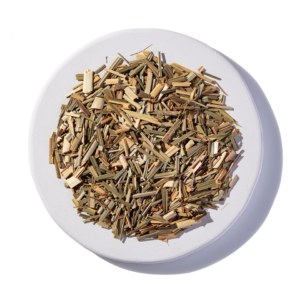Gardening and Planting: The Best Ideas You Need
Welcome to Gardening And Planting Oasis!
Imagine your garden as a beautiful, eco-friendly space. With a few smart tips and the right gardening products, you can achieve this.
These tips will help your plants thrive and lower your environmental impact. We also offer a selection of the best green gardening products.
Explore our blog, where every article is a roadmap to turning your garden into an environmentally friendly masterpiece.

Gardening And Planting: More Than Just Plants, It’s a Way of Life!
Gardening isn’t just about growing food or making a space look nice. It’s a great way to relax, clear your mind, and feel a sense of accomplishment. Plants also help clean the air, support wildlife, and fight climate change. Plus, gardening brings people together! Community gardens create friendships and teach valuable skills. Whether it’s a few potted plants or a whole backyard garden, growing something makes life better in so many ways.
Bloom With Inspiration: Gardening And Planting
How to Start Growing Your Own Mushrooms at Home?
Discover the basics of growing your mushrooms at home, including selecting mushroom varieties. How to prepare substrates, and maintain the right conditions for successful cultivation.
What Bonsai Tree to Buy? We Have An Answer
Find guidance on choosing the right bonsai tree for you. We have tips on species selection, care requirements, and your personal preferences.
Learn How To Grow Organic Mushrooms At Home!

Learn how to grow organic mushrooms at home with step-by-step techniques. How to select the right type of mushrooms, and create a suitable environment for healthy growth.
Best Products For Gardening And Planting:
Frequently Asked Questions:
How Do I Start a Garden For The First Time?
Starting a garden begins with choosing the right location. Find a spot with at least 6 hours of sunlight daily and good drainage. Decide whether to plant vegetables, herbs, flowers, or a mix. Prepare the soil by removing weeds and adding compost for nutrients. Start with beginner-friendly plants like tomatoes, basil, or lettuce.
Tips & Advice:
- Start small—a 4×4 raised bed or a few containers are great first steps.
- Use quality soil and organic compost for better plant growth.
- Label your plants to keep track of what you’re growing!
Product Recommendations:
- Miracle-Gro Garden Soil (rich nutrients for healthy plants)
- Raised Bed Planter Kit (easy to use for beginners)
- Self-watering pots (great for container gardening)
What is The Best Way to Plan a Garden For Beginners?
Good garden planning saves time and effort! Sketch your garden layout, considering sunlight, spacing, and plant compatibility. Place taller plants at the back and smaller ones at the front. Use companion planting—tomatoes and basil grow well together, while onions repel pests from carrots.
Tips & Advice:
- Start with a small, manageable space (like a raised bed or patio garden).
- Rotate crops each season to prevent soil depletion.
- Use trellises for vertical gardening (great for cucumbers and beans).
Product Recommendations:
- Garden Planning App (helps organize plant placement)
- Trellis Netting (supports climbing plants)
- Drip Irrigation Kit (conserves water & makes watering easier)
What Are The Easiest Plants To Grow In A Beginner Garden?
If you’re a newbie gardener, start with low-maintenance plants that grow easily. Some great beginner options include:
- Vegetables: Lettuce, radishes, cherry tomatoes, zucchini
- Herbs: Basil, mint, cilantro, rosemary
- Flowers: Marigolds, sunflowers, zinnias
Tips & Advice:
- Choose plants that suit your climate—some plants thrive in cool weather, others love heat.
- Start with seedlings instead of seeds for faster results.
- Use mulch to retain moisture and prevent weeds.
Product Recommendations:
- Beginner Seed Starter Kit (easy-to-grow seeds)
- Raised Bed Gardening Kit (for small spaces)
- Mulch Mat Roll (reduces weeds & locks in moisture)
What Are The First Steps To Growing A Vegetable Garden?
Starting a vegetable garden is rewarding and great for saving money on groceries! First, test your soil to check nutrient levels. Then, plant easy vegetables like lettuce, spinach, and peppers. Water deeply but not too often, and protect young plants from pests with row covers.
Tips & Advice:
- Space your plants properly—crowding leads to poor air circulation.
- Add compost regularly for nutrient-rich soil.
- Harvest at the right time—overripe veggies lose flavor!
Product Recommendations:
- Soil Test Kit (checks pH and nutrients)
- Organic Compost Mix (enriches garden soil)
- Floating Row Covers (protect from pests)
How Do I Start A Raised Bed Garden?
Raised beds are great for beginners because they offer better drainage and control over soil quality. Choose a wood or metal frame and fill it with a mix of compost, soil, and perlite for aeration. Raised beds warm up faster in spring, meaning you can plant earlier!
Tips & Advice:
- Choose a depth of at least 12 inches for healthy root growth.
- Use untreated wood (chemicals in treated wood can harm plants).
- Install a drip irrigation system to simplify watering.
Product Recommendations:
- Cedar Raised Garden Bed (long-lasting and easy to assemble)
- Organic Raised Bed Soil Mix (optimized for raised beds)
- Soaker Hose (efficient watering system)
What’s The Best Way To Start A Small-Space Garden?
Even if you don’t have a backyard, you can still garden! Container gardening works well on balconies and patios. Use vertical gardening techniques, like hanging baskets or wall planters, to maximize space.
Tips & Advice:
- Use self-watering containers to reduce maintenance.
- Grow compact plants—basil, strawberries, and cherry tomatoes do great in small pots.
- Use wall-mounted planters for herbs and flowers.
Product Recommendations:
- Hanging Wall Planters (great for herbs & flowers)
- Fabric Grow Bags (lightweight & space-saving)
- Self-Watering Herb Planter (perfect for busy gardeners)
How Do I Prevent Weeds In My New Garden?
Weeds compete with plants for nutrients and water. To stop weeds from taking over, use mulch, landscape fabric, and regular weeding.
Tips & Advice:
- •Use mulch to block sunlight from reaching weeds.
- •Pull weeds when the soil is damp—it’s easier!
- •Try natural weed killers like vinegar spray for small areas.
Product Recommendations:
- •Landscape Fabric Roll (prevents weed growth)
- •Organic Mulch (keeps the soil moist & stops weeds)
- •Garden Weeder Tool (makes pulling weeds easier)
What’s The Best Way To Water My Garden?
Overwatering and underwatering are common beginner mistakes. Most plants need 1 inch of water per week, but it’s best to check the soil before watering.
Tips & Advice:
- Water in the morning to reduce evaporation.
- Deep watering is better than frequent, shallow watering.
- Use a drip irrigation system for consistent moisture.
Product Recommendations:
- Moisture Meter (helps prevent over/underwatering)
- Drip Irrigation Kit (efficient watering solution)
- Watering Wand (gentle on delicate plants)
How Do I Protect My Plants From Pests Naturally?
Garden pests can destroy plants fast! Instead of chemical sprays, use natural methods like companion planting and neem oil.
Tips & Advice:
- Marigolds repel bugs—plant them near veggies!
- Use neem oil for organic pest control.
- Hand-pick large pests (like caterpillars) in the early morning.
Product Recommendations:
- Neem Oil Spray (natural pest deterrent)
- Floating Row Covers (keep insects away)
- Diatomaceous Earth (non-toxic insect killer)
When Is The Best Time To Start A Garden?
The best time depends on your location and what you’re growing! In most places, spring is the ideal season to start planting. Some cool-weather crops (like lettuce and kale) can be planted in early spring. On the contrary, warm-weather crops (like tomatoes and peppers) need to wait until after the last frost.
Tips & Advice:
- •Check your local frost dates before planting.
- •Start seeds indoors for a head start on the growing season.
- •Use cold frames to extend the growing season in fall.
Product Recommendations:
- •Seed Starting Kit (for early indoor planting)
- •Cold Frame Greenhouse (protects plants from frost)
- •Planting Calendar App (tracks frost dates & planting schedules)
What Are The Basics Of Starting A Garden? (Gardens 101)
The key to a great garden is location, soil, and plant selection. Choose a sunny spot (most plants need at least 6 hours of sun)and prepare nutrient-rich soil. Then, start with beginner-friendly plants like tomatoes, basil, and lettuce. Water consistently and watch for pests.
Tips & Advice:
- •Start small—a 4×4 raised bed or container garden is easier to manage.
- •Use compost to naturally improve soil.
- •Label plants to stay organized.
Product Recommendations:
- •Organic Garden Soil (nutrient-rich foundation)
- •Raised Bed Gardening Kit (easy for beginners)
- •Mulch Mat Roll (prevents weeds & retains moisture)
How Do I Plant Garlic For A Big Harvest? (Garlic Planting Tips)
Garlic is best planted in the fall before the ground freezes. Break apart the bulb and plant individual cloves, pointy side up, about 2 inches deep and 6 inches apart. Keep the soil moist but not soggy.
Tips & Advice:
- Mulch heavily to protect the cloves during winter.
- Use well-draining soil—garlic hates soggy roots.
- Harvest when ⅓ of the leaves turn yellow.
Product Recommendations:
- Organic Garlic Bulbs (best for planting)
- Straw Mulch (protects garlic in cold weather)
- Garden Fork (for easy harvesting)
What’s The Best Way To Plant And Care For Blackberries? (Blackberry Planting Tips)
Blackberries love full sun and rich, well-draining soil. Plant canes 3 feet apart and provide a trellis or fence for support. Prune in late winter to encourage new growth.
Tips & Advice:
- Water deeply once a week.
- Prune old canes to boost berry production.
- Fertilize in early spring for sweeter fruit.
Product Recommendations:
- Berry Trellis Kit (supports climbing canes)
- Organic Berry Fertilizer (boosts fruit growth)
- Mulch Roll (keeps moisture in & weeds out)
How Do I Grow Arugula Successfully? (Arugula Planting Tips)
Arugula is a fast-growing leafy green that thrives in cool weather. Directly sow seeds ½ inch deep, spaced 2 inches apart, and water regularly. Harvest leaves when they reach 3-4 inches tall.
Tips & Advice:
- Plant every 2 weeks for a continuous harvest.
- Water regularly to prevent bitter leaves.
- Use a shade cloth in hot weather to avoid bolting.
Product Recommendations:
- Arugula Heirloom Seeds (easy-growing variety)
- Shade Netting (prevents bolting in heat)
- Compost Tea Bags (natural fertilizer)
What’s The Secret To Growing Juicy Tomatoes? (Tomato Planting Tips)
Tomatoes love full sun (8+ hours daily) and well-draining, nutrient-rich soil. Plant deep, burying part of the stem, and provide stakes or cages for support.
Tips & Advice:
- Water at the base to prevent fungal diseases.
- Remove lower leaves to improve air circulation.
- Use Epsom salt to prevent blossom-end rot.
Product Recommendations:
- Tomato Cage Kit (prevents bending & breaking)
- Epsom Salt (adds magnesium for healthier fruit)
- Organic Tomato Fertilizer (boosts growth)
How Do I Grow Sweet, Juicy Strawberries? (Strawberry Planting Tips)
Strawberries need full sun and rich, slightly acidic soil. Space plants 12 inches apart and mulch around them to keep fruit off the soil.
Tips & Advice:
- Pinch off first-year flowers for stronger plants.
- Use netting to protect berries from birds.
- Water in the morning to prevent mold.
Product Recommendations:
- Strawberry Grow Bags (space-saving & productive)
- Berry Fertilizer (boosts flowering & fruiting)
- Bird Netting (keeps pests away)
How Do I Grow Fresh Basil? (Basil Planting Tips)
Basil loves warm weather and full sun. Sow seeds or plant seedlings 12 inches apart, and pinch off leaves regularly to encourage bushy growth.
Tips & Advice:
- Harvest leaves often to prevent flowering.
- Water in the morning to prevent wilting.
- Pair with tomatoes—basil improves tomato flavor!
Product Recommendations:
- Basil Seed Kit (includes multiple varieties)
- Self-Watering Herb Pots (great for indoor growing)
- Organic Liquid Fertilizer (boosts growth)
What’s The Best Way To Plant Hydrangeas? (Hydrangea Planting Tips)
Hydrangeas thrive in the morning sun and afternoon shade. Plant in moist, well-draining soil, and water deeply once a week.
Tips & Advice:
- Add coffee grounds to make the flowers blue.
- Prune lightly—heavy pruning reduces blooms.
- Use mulch to keep roots cool.
Product Recommendations:
- Hydrangea Fertilizer (enhances flower color)
- Soil Acidifier (for vibrant blue blooms)
- Moisture Meter (prevents over/underwatering)
What Are The Best Farm Planting Tips For Beginners? (Farm Tips Planting)
Farming success starts with soil health, crop rotation, and water management. Choose crops suited to your climate and soil type, and always test soil nutrients before planting.
Tips & Advice:
- Use cover crops (like clover) to restore nutrients.
- Rotate crops yearly to prevent soil depletion.
- Install drip irrigation for consistent watering.
Product Recommendations:
- Soil Test Kit (ensures optimal soil conditions)
- Drip Irrigation System (reduces water waste)
- Organic Compost (improves soil quality)
How Do I Plant And Care For Pumpkins? (Pumpkin Planting Tips)
Pumpkins need full sun and lots of space. Plant seeds 1 inch deep, spaced 3 feet apart, and provide plenty of water as they grow.
Tips & Advice:
- Pollinate by hand if flowers aren’t producing fruit.
- Use mulch to prevent weeds and retain moisture.
- Support heavy pumpkins with slings on trellises.
Product Recommendations:
- Pumpkin Seed Pack (high-yield varieties)
- Garden Mulch Roll (keeps the soil moist & weed-free)
- Pollination Brush (hand-pollinates flowers)
What’s The Best Way To Grow Watermelon? (Watermelon Planting Tips)
Watermelon plants thrive in warm weather and sandy, well-draining soil. Space seeds 2 feet apart, and reduce watering once fruit starts growing for better sweetness.
Tips & Advice:
- Avoid overhead watering to prevent leaf diseases.
- Turn melons occasionally for even ripening.
- Use black plastic mulch to retain warmth.
Product Recommendations:
- Watermelon Trellis Kit (supports vines)
- Sweet Melon Fertilizer (enhances fruit flavor)
- Black Plastic Mulch (warms soil & prevents weeds)
How Do I Plant Cilantro And Coriander? (Cilantro & Coriander Planting Tips)
Cilantro grows best in cool weather, while coriander (the seeds) takes longer to mature. Sow seeds ¼ inch deep and keep the soil moist.
Tips & Advice:
- Plant in partial shade if growing in the summer.
- Harvest leaves often to prevent bolting.
- Grow in containers and move indoors when hot.
Product Recommendations:
- Cilantro & Coriander Seed Pack (dual-purpose growing)
- Herb Planter Box (perfect for small spaces)
- Self-watering pots (prevents drying out)
What Are The Best Tips For Planting Peppers? (Tips For Planting Peppers)
Peppers love warm temperatures and full sun. Start seeds indoors 6-8 weeks before the last frost, and transplant when nights are consistently above 55°F.
Tips & Advice:
- Use Epsom salt to boost magnesium levels.
- Stake tall varieties to prevent bending.
- Water deeply but less frequently to strengthen roots.
Product Recommendations:
- Pepper Seed Variety Pack (includes sweet & spicy options)
- Epsom Salt for Plants (prevents nutrient deficiencies)
- Garden Stakes (supports heavy pepper plants)
How Do I Plant And Maintain A Flower Pot Garden? (Tips For Planting Flower Pots)
Container gardening requires good drainage and a high-quality potting mix. Pick pots with holes at the bottom and mix flowers with different heights and colors for visual appeal.
Tips & Advice:
- Choose self-watering pots for easy maintenance.
- Use a slow-release fertilizer for continuous feeding.
- Rotate pots every few weeks for even sun exposure.
Product Recommendations:
- Self-watering planters (reduces watering needs)
- Organic Potting Soil Mix (lightweight & nutrient-rich)
- Flower Fertilizer Spikes (long-lasting nutrition)
How Do I Plant Bulbs In The Fall For Spring Blooms? (Tips For Planting Bulbs In The Fall)
Fall-planted bulbs like tulips and daffodils need well-draining soil and cold temperatures to bloom in spring. Plant bulbs 3x as deep as their size and pointy side up.
Tips & Advice:
- Add bone meal for root growth.
- Mulch heavily to protect from frost.
- Water once after planting, then leave until spring.
Product Recommendations:
- Spring Flower Bulb Mix (tulips, daffodils, hyacinths)
- Bulb Planter Tool (makes digging easier)
- Bone Meal Fertilizer (enhances root growth)
What’s The Best Way To Plant Strawberries In Pots? (Strawberry Planting Tips)
Strawberries grow well in hanging baskets or wide, shallow pots. Choose everbearing varieties for multiple harvests, and keep soil moist but not soggy.
Tips & Advice:
- Trim runners to focus energy on fruiting.
- Use liquid fertilizer every 2 weeks.
- Move pots to shade during times of extreme heat.
Product Recommendations:
- Strawberry Tower Planter (maximizes small spaces)
- Berry Fertilizer (boosts fruit production)
- Bird Netting (protects ripe berries)
How Do I Prevent Plants From Getting Brown Tips? (Plant Brown Tips & Spider Plant Care)
Brown tips on plants usually indicate overwatering, low humidity, or fertilizer buildup. Trim damaged tips, check for root rot, and adjust watering habits.
Tips & Advice:
- Use distilled water if tap water has chemicals.
- Mist plants to increase humidity.
- Flush soil monthly to remove excess salts.
Product Recommendations:
- Plant Moisture Meter (prevents over/underwatering)
- Humidity Tray (raises moisture levels)
- Organic Leaf Shine Spray (keeps leaves healthy)
How Do I Grow Cucumbers For High Yields? (Cucumber Gardening Tips)
Cucumbers need full sun and trellises for support. Plant seeds ½ inch deep, 12 inches apart, and keep soil consistently moist.
Tips & Advice:
- Harvest cucumbers young for better taste.
- Use companion planting—grow near beans & radishes.
- Avoid overhead watering to prevent mildew.
Product Recommendations:
- Cucumber Trellis Netting (prevents disease & saves space)
- Mulch Mat (keeps the soil moist)
- Organic Pest Spray (protects from bugs)
What Should I Do In My Garden Each Season? (Seasonal Gardening Tips)What Should I Do In My Garden Each Season? (Seasonal Gardening Tips)
Gardening changes with the seasons! Here’s a quick guide:
- Spring: Start seeds, plant cool-weather crops (lettuce, spinach, peas), and prep soil.
- Summer: Water deeply, mulch, harvest regularly, and watch for pests.
- Fall: Plant garlic, onions, and cover crops; clear out dead plants.
- Winter: Plan next year’s garden, protect perennials, and start indoor seedlings.
Tips & Advice:
- Check frost dates before planting each season.
- Mulch heavily in fall and winter to protect soil.
- Use row covers to extend the growing season.
Product Recommendations:
- Cold Frame Greenhouse (protects plants from frost)
- Seasonal Planting Calendar (tracks best planting times)
- Floating Row Covers (insulates against cold & pests)
How Do I Prepare My Garden For Spring Planting? (Spring Gardening Tips)
Spring is the best time to test soil, clear debris, and start seeds. Add compost and turn the soil before planting.
Tips & Advice:
- Start seeds indoors 6-8 weeks before planting.
- Prune fruit trees before new growth begins.
- Use raised beds for an earlier planting season.
Product Recommendations:
- Soil Test Kit (checks pH & nutrients)
- Seed Starting Trays (jump-starts the season)
- Garden Hoe & Cultivator (prepares soil easily)
What Should I Plant In The Summer For The Best Harvest? (Summer Gardening Tips)
Summer is great for heat-loving plants like tomatoes, peppers, zucchini, and beans. Keep soil moist and shaded during extreme heat.
Tips & Advice:
- Water early in the morning to prevent evaporation.
- Use shade cloth to protect delicate plants.
- Apply mulch to retain soil moisture.
Product Recommendations:
- Drip Irrigation Kit (efficient summer watering)
- Shade Cloth Netting (protects from sunburn)
- Mulch Cover (reduces weeds & keeps soil cool)
How Do I Transition My Garden To Fall Crops? (Fall Gardening Tips)
Fall is perfect for planting cool-weather crops like broccoli, kale, and carrots. Remove summer plants and add compost to refresh the soil.
Tips & Advice:
- Plant cover crops (like clover) to enrich the soil.
- Use row covers to protect plants from early frost.
- Harvest before the first hard freeze.
Product Recommendations:
- Fall Crop Seed Pack (lettuce, spinach, radish, kale)
- Garden Compost Mix (revitalizes soil)
- Cold Weather Plant Covers (prevent frost damage)
What Should I Do To Protect My Garden In Winter? (Winter Gardening Tips)
Winter gardens require insulation, planning, and protection. Use mulch, greenhouses, or cold frames to keep plants alive.
Tips & Advice:
- Plant hardy winter crops like onions & garlic.
- Use straw mulch to insulate the soil.
- Check plants weekly for frost damage.
Product Recommendations:
- Cold Frame Kit (keeps plants warm in winter)
- Heavy-duty mulch Cover (prevents soil freezing)
- Indoor Grow Lights (for winter gardening)
How Do I Extend My Growing Season? (Year-Round Gardening Tips)
To garden all year, use greenhouses, cold frames, and indoor seed starting. Choose cold-hardy plants for fall and winter.
Tips & Advice:
- Use row covers for early spring and late fall crops.
- Grow herbs indoors for fresh greens in winter.
- Rotate crops seasonally to maintain soil health.
Product Recommendations:
- Mini Greenhouse Kit (perfect for small spaces)
- Hydroponic Herb Garden (for year-round growing)
- Row Cover Tunnels (protects plants from frost)
What’s the Best Way To Start a Compost Pile? (Composting Tips)
Composting enriches the soil and reduces waste. Mix green materials (fruit scraps, grass clippings) with brown materials (leaves, straw) and turn in weekly.
Tips & Advice:
- Keep compost moist but not wet.
- Shred large items to speed up decomposition.
- Avoid dairy & meat to prevent bad smells.
Product Recommendations:
- Compost Tumbler Bin (easy mixing & aeration)
- Organic Compost Starter (boosts breakdown)
- Kitchen Compost Pail (for food scraps)
How Do I Prevent Common Garden Pests? (Organic Pest Control Tips)
To keep pests away, use companion planting, neem oil, and row covers.
Tips & Advice:
- Plant marigolds to repel aphids.
- Hand-pick larger pests like caterpillars.
- Use neem oil for natural insect control.
Product Recommendations:
- Neem Oil Spray (natural insect repellent)
- Floating Row Covers (protect against insects)
- Diatomaceous Earth (safe, organic pest killer)
How Do I Improve The Poor Soil in My Garden? (Soil Improvement Tips)
If your garden soil is too sandy or compacted, add compost, organic matter, and cover crops to restore nutrients.
Tips & Advice:
- Test soil before adding amendments.
- Use aged manure for natural fertilization.
- Mulch soil to prevent erosion.
Product Recommendations:
- Organic Soil Conditioner (improves drainage & nutrients)
- Garden Mulch Roll (reduces soil erosion)
- pH Balancing Kit (adjusts soil acidity)
How Do I Grow Food Indoors? (Indoor Gardening Tips)
Indoor gardening is perfect for herbs, greens, and small vegetables. Use grow lights, hydroponic systems, and self-watering containers.
Tips & Advice:
- Use LED grow lights for better plant health.
- Choose dwarf or compact plant varieties.
- Rotate plants weekly for even light exposure.
Product Recommendations:
- Hydroponic Growing System (low-maintenance indoor gardening)
- Full-Spectrum Grow Lights (boosts plant growth)
- Self-Watering Planters (reduces watering frequency)
What Is Permaculture Gardening, And How Do I Start? (Permaculture Gardening Tips)
Permaculture is a self-sustaining gardening system that mimics nature. It focuses on companion planting, soil health, and water conservation. Start by observing your land, planting perennials, and using no-dig gardening techniques.
Tips & Advice:
- Plant native species to reduce maintenance.
- Use mulch & compost to naturally enrich soil.
- Create a water catchment system to save rainwater.
Product Recommendations:
- Permaculture Design Guide (for beginners)
- No-till garden Mulch (improves soil health)
- Rain Barrel System (collects & recycles water)
How Do I Grow Food Organically? (Organic Gardening Tips)
Organic gardening avoids synthetic fertilizers and pesticides. Instead, use compost, crop rotation, and beneficial insects to maintain plant health.
Tips & Advice:
- Use neem oil for natural pest control.
- Plant nitrogen-fixing crops (like peas & beans) to enrich the soil.
- Make homemade compost tea to boost plant nutrition.
Product Recommendations:
- Organic Fertilizer Pack (for veggies & fruits)
- Beneficial Insect Mix (attracts pollinators & predators)
- Compost Tea Brewer Kit (creates natural plant food)
How Do I Start Greenhouse Gardening? (Greenhouse Gardening Tips)
Greenhouses allow year-round gardening by providing controlled temperatures. Choose a polycarbonate or glass greenhouse, install ventilation, and monitor humidity levels.
Tips & Advice:
- Use shade cloth in the summer to prevent overheating.
- Install a fan for air circulation & disease prevention.
- Grow heat-loving plants like tomatoes & peppers in winter.
Product Recommendations:
- Mini Greenhouse Kit (for small gardens)
- Automatic Vent Opener (regulates temperature)
- Humidity Sensor (prevents mold & mildew)
What Are The Best Cover Crops For Soil Health? (Soil Regeneration Tips)
Cover crops improve soil fertility, reduce erosion, and suppress weeds. The best options include clover, rye, and alfalfa.
Tips & Advice:
- Plant cover crops after harvesting veggies.
- Turn cover crops into the soil for added nutrients.
- Mix legumes & grains for maximum soil enrichment.
Product Recommendations:
- Cover Crop Seed Mix (for better soil structure)
- Organic Soil Inoculant (boosts microbial activity)
- Garden Tiller (mixes organic matter into the soil)
How Do I Set Up a Self-Watering Garden? (Water Conservation Tips)
A self-watering garden reduces water waste and ensures plants get moisture consistently. Use drip irrigation, ollas (buried clay pots), or hydroponics.
Tips & Advice:
- Use mulch to retain moisture and prevent evaporation.
- Install a rainwater collection system for eco-friendly irrigation.
- Choose drought-resistant plants like lavender & rosemary.
Product Recommendations:
- Self-Watering Raised Bed Kit (reduces maintenance)
- Drip Irrigation System (automates watering)
- Ollas Watering Pots (slowly release water into the soil)
What is hugelkultur, And How Do I Build a Raised Bed With It? (Hugelkultur Tips)
Hugelkultur is a German gardening method that uses buried logs to create self-fertilizing, moisture-retaining raised beds.
Tips & Advice:
- Use hardwood logs (oak, maple) to break down slowly.
- Layer soil, compost, and wood for a nutrient-rich base.
- Plant deep-rooted crops like squash & tomatoes for best results.
Product Recommendations:
- Hugelkultur Raised Bed Kit (easy DIY setup)
- Organic Compost Bags (for soil enrichment)
- Garden Mulch Cover (keeps the soil moist)
How Can I Increase Pollinators In My Garden? (Pollinator Garden Tips)
Pollinators like bees, butterflies, and hummingbirds boost plant yields. Plant nectar-rich flowers, avoid pesticides, and add bee hotels for nesting.
Tips & Advice:
- Grow wildflowers & herbs like lavender & sunflowers.
- Provide water sources (shallow dishes with stones).
- Use organic pest control to protect pollinators.
Product Recommendations:
- Bee & Butterfly Flower Mix (attracts beneficial insects)
- Pollinator Bee House (gives bees a safe home)
- Organic Wildflower Seeds (for year-round blooms)
How Do I Create a No-Dig Garden? (No-Till Gardening Tips)
No-dig gardening preserves soil structure and improves fertility by layering compost, mulch, and organic matter.
Tips & Advice:
- Use cardboard or newspaper to smother weeds naturally.
- Layer compost, straw, and soil for a nutrient-rich base.
- Avoid stepping on garden beds to prevent soil compaction.
Product Recommendations:
- Organic No-Till Mulch (suppresses weeds & feeds soil)
- Compost Bin Kit (for nutrient-rich amendments)
- Heavy-duty landscape Fabric (prevents weeds)
What’s The Best Way to Grow Mushrooms At Home? (Mushroom Growing Tips)
Mushrooms need low light, high humidity, and controlled temperatures. Grow them in logs, sawdust, or coffee grounds.
Tips & Advice:
- Mist mushrooms daily to maintain humidity.
- Use hardwood logs (oak, birch) for long-term production.
- Keep it in a dark, cool place like a basement or closet.
Product Recommendations:
- Mushroom Grow Kit (perfect for beginners)
- Sterilized Mushroom Substrate (ideal for indoor growing)
- Humidity Dome (keeps conditions ideal)
How Do I Build a Food Forest? (Food Forest Gardening Tips)
A food forest is a multi-layered, self-sustaining garden with trees, shrubs, and ground covers.
Tips & Advice:
- Plant fruit trees first, then add smaller plants.
- Use companion planting for natural pest control.
- Incorporate nitrogen-fixing plants to improve soil.
Product Recommendations:
- Food Forest Starter Kit (fruit & nut trees)
- Organic Berry Shrubs (for edible hedges)
- Perennial Herb Mix (supports biodiversity)






